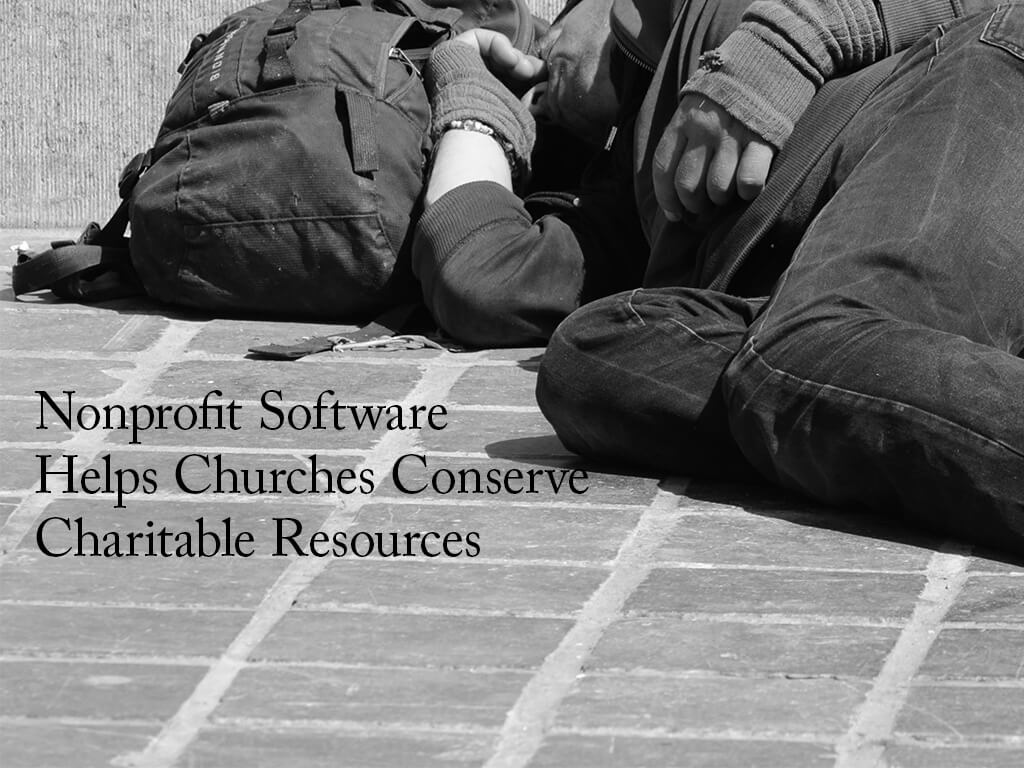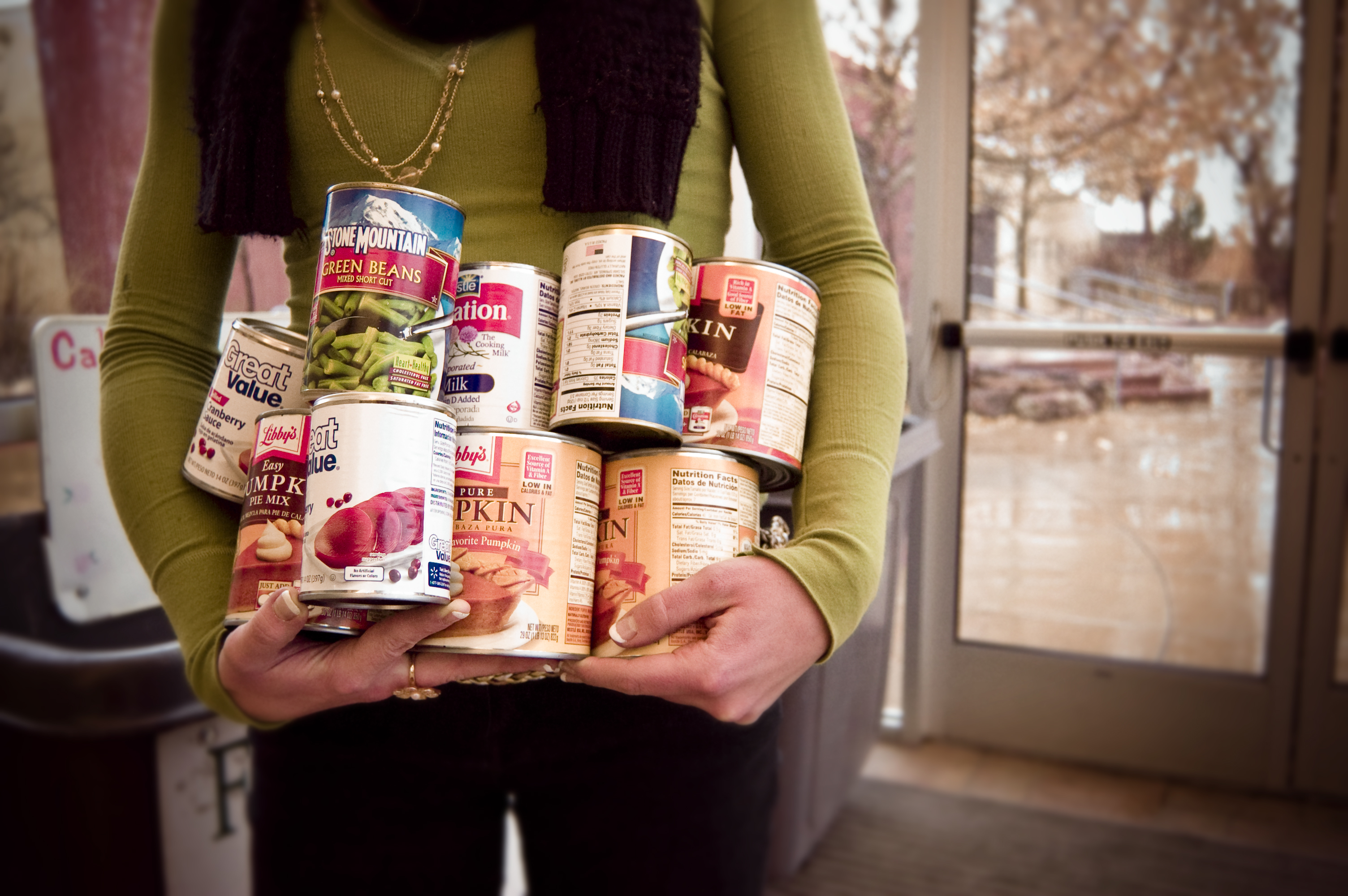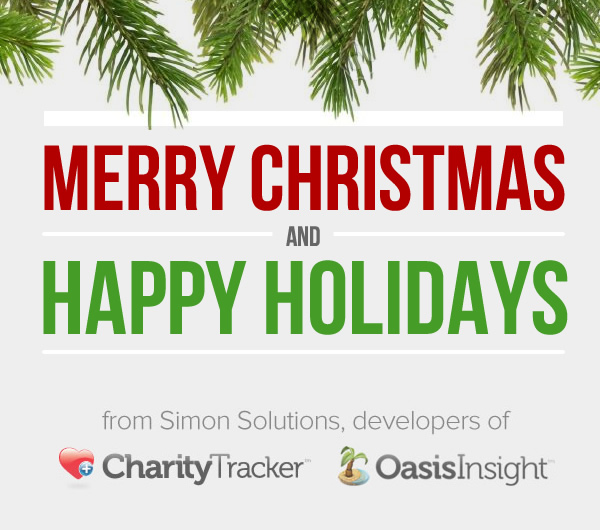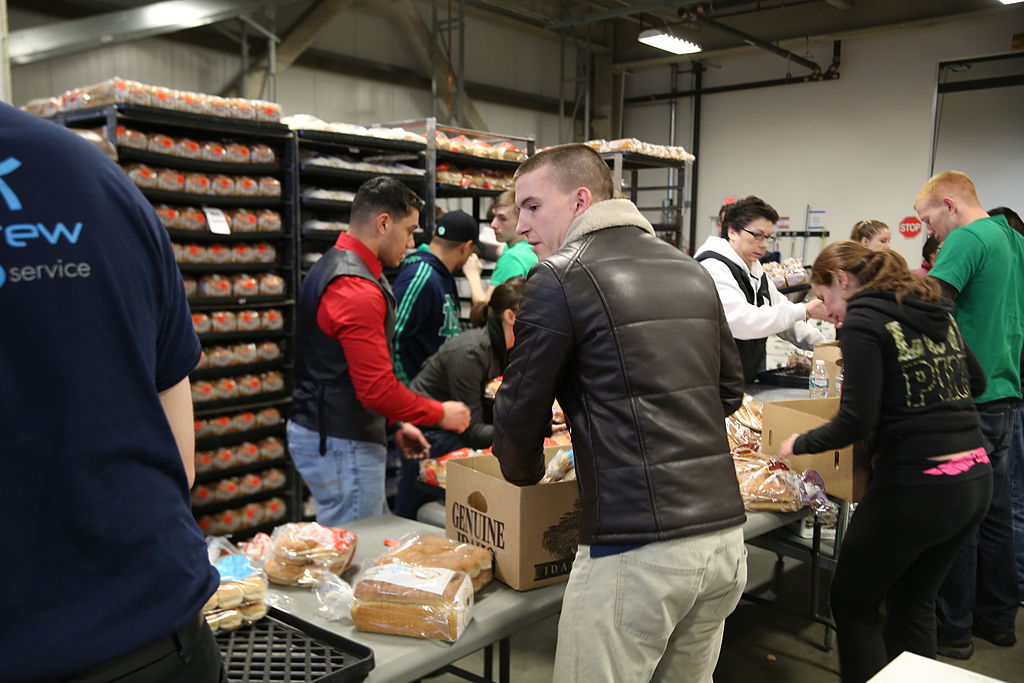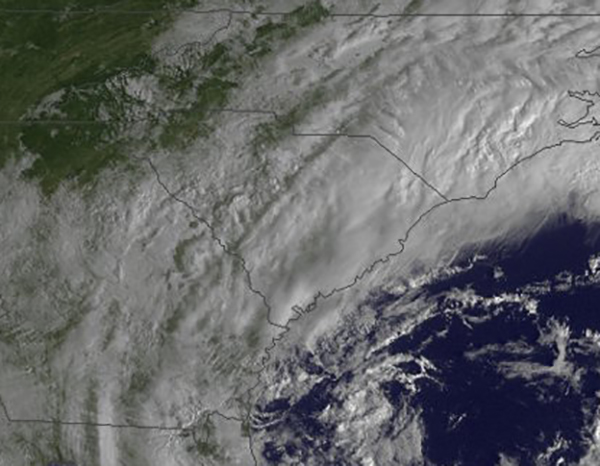Sept. 26, 2016, 1:52 p.m.
·
0 comments
Once a month this fall, Simon Solutions will host a FREE webinar, bringing even greater transformation to your community through innovation and collaboration. Our September webinar was a great success with 135 people registering!
Fall 2016 Schedule
September: Getting the Maximum Benefit from Technology to Build Capacity & Collaborate
Held on Tuesday, Sept 20, 1- 2 PM CT
Click here to watch webinar recording
Click here to download Handouts & PowerPoint Slides
Hear from Shelly Parks and Kelcey Ellis, leaders in two of San Diego’s largest food banks, about building the capacity of their food distribution partners. In San Diego, people began lining up as early as 2:00 a.m. to receive a box of food and the line stretched around the block. Today, with collaboration and technology, the wait time is 30 minutes or less. They describe their processes and work together. No matter what agency you work in, there are principles, tips and tools to learn from.
October: Funding is Changing. Are You Keeping Up?
Oct 18, 2016 1:00 - 2 PM CT
with Mike Simon, co-founder of Simon Solutions
Cathy Easley, Trident United Way, Charleston, SC
Click here to Learn More & Register for October Webinar
Learn about:
• The New Funding Logic Model
• Measuring Input, Activities, Outputs, Outcomes and Impact
• The importance of creating a transformational roadmap
• The technical tools that can help you put it all together
November Webinar: Getting Ahead: Helping People Create a Plan for Stability
Nov 1, 2016 1:00 - 2:00 PM CT
with Phil DeVol, author of Getting Ahead in a Just Getting By World
Click Here to Learn More & Register for November Webinar
Learn about:
• How Getting Ahead class participants, called “investigators,” examine their own experience of poverty as well as explore issues in the community that impact poverty
• How Getting Ahead facilitators guide “investigators” through an assessment of their own resources and how to build those resources as part of their move to self-sufficiency
• How lives are challenged and changed and how Getting Ahead graduates are provided support from Bridges Out of Poverty collaboratives as they work toward their goals.
• How CharityTracker and Getting Ahead have partnered to assess and measure “investigator” success
Let's learn together this fall!
Categories:
Info
July 5, 2016, 3:56 p.m.
·
0 comments
By Krista Petty, Community Connector
Do you know how CharityTracker and Oasis Insight got their start? Our technology company was simply asked to help our local community. From that adventure in serving our neighbors in need came a huge innovation that has spread across the United States. It's beyond what we could have ever imagined! Here's a bit of our story, if you haven't heard it already.
Big Storm Brings Synergy...
When Hurricane Katrina hit a stretch of Alabama coast in 2005, it devastated small coastal shrimping towns like Bayou La Batre and others along Mobile Bay. And while the storm had an immediate and visible effect coastally, many did not see the ripple affect into other communities.
The Ripple North...
Southern Alabama families and entire neighborhoods migrated almost 400 miles north, settling in a metropolitan area in northwestern Alabama called The Shoals. Agencies and churches in The Shoals area quickly formed a VOAD (Voluntary Organizations Active in Disaster) coalition to provide a continuum of care, response, and recovery for these displaced families. Some community agencies worked for upwards of 18 months or more to help relocate families. The VOAD team included the United Way, Red Cross, Faith Church, people from the Social Security Administration and many other churches and agencies.
A Collaborative Spirit Not Enough
While the agencies, organizations and churches in the Shoals had a collaborative spirit, they found communication and coordination difficult. With 330 families to place, resources dried up quickly. Agencies discovered they weren’t always getting the same information from people, and didn’t know who was giving aid to whom.
As the agencies continued to work together, even after the immediate disaster was over, they realized the need for better coordination and communication. They needed to tool to be able to share information in real time to work more effectively together. After checking into several system options and finding them either ineffective or too costly, the VOAD team and United Way director began working with locals Mike Simon and his team of software and web developers at Simon Solutions to create a tool specifically to meet their needs. What was created by was an affordable, easy-to-use, web-based system by which agencies and churches could share their assistance records and information with one another.
CharityTracker was born...
While we did not realize it at the time, we created a useful tool for our community that could be utilized for every community and city in America. From our humble beginnings in disaster relief for our own community, CharityTracker has grown to be used in 1,049 cities and has continued to innovate solutions. We've come a long way, like creating more in-depth reporting features and building in the opportunity to track outcomes and assessments. We've had many developments, like Oasis Insight, which was created off of CharityTracker to serve the specific needs of food banks and food pantries with a variety of innovations and technology solutions.
What began as a mission to help our local community has grown into a vision to help every community in the U.S. to build strong collaborative networks that transform communities. Long story short, we build web applications. We’re nerds with a passion for making computers work for you, not against you. Our manifesto is simple - carefully listen and continually improve. It's how we got started and how we continue to operate today. Thanks for joining us on this adventure for the past 10 years!
Above photo of by Marvin Nauman (This image is from the FEMA Photo Library.) [Public domain], via Wikimedia Commons
Categories:
Info
June 13, 2016, 12:13 p.m.
·
0 comments
By Krista Petty, Community Connector
In the past year, I have interviewed many people whom I consider champions in serving their local communities. Meet one of those champions! Liz Gomez is Outreach Programs Manager of Alameda County Community Food Bank. She implemented Oasis Insight to track her team's CalFresh Outreach (California’s SNAP program). The Alameda Food Bank provides CalFresh prescreening and application assistance in five different languages. They also offer free training for community agencies to help identify potentially eligible CalFresh recipients. Their CalFresh 101 for beginners gives the basics on program eligibility, including prescreening. CalFresh 102 for advanced learners gives an in-depth look at eligibility for special populations such as seniors, disabled, immigrants, felons and homeless. They have been using Oasis Insight to track their progress for three years.
is Outreach Programs Manager of Alameda County Community Food Bank. She implemented Oasis Insight to track her team's CalFresh Outreach (California’s SNAP program). The Alameda Food Bank provides CalFresh prescreening and application assistance in five different languages. They also offer free training for community agencies to help identify potentially eligible CalFresh recipients. Their CalFresh 101 for beginners gives the basics on program eligibility, including prescreening. CalFresh 102 for advanced learners gives an in-depth look at eligibility for special populations such as seniors, disabled, immigrants, felons and homeless. They have been using Oasis Insight to track their progress for three years.
Liz, Can you describe how you and your team use Oasis Insight?
Liz: Oasis is our client management tool for CalFresh outreach work. We use Oasis to collect the information of the households we assist and to track our activities and events. Currently, we have 15 staff on our team and everyone is a user. We are also in the testing phase of utilizing Oasis to work with our subcontractors for CalFresh outreach as well. Our subcontractors include a health clinic, call centers, nonprofits, and one hospital.
Tell us more about the relationship with subcontractors. What data will you share across your network?
Liz: Our subcontractors can view their own clients, but not ours. Using Oasis with them will be helpful because we need to collect monthly reports on our CalFresh outreach. Oasis allows us to keep all the client data in one place so we will no longer need to pick up tracking logs. We, at the food bank, are able to do reports and activities ourselves. We have already launched this with one of our subcontractors, a childcare referral agency hotline. In all, we will have five to six subcontractors with 20 users (in addition to existing team).
Can you share about your Oasis user experience?
Liz: Yes, our team finds Oasis user-friendly. We usually spend five to six hours training new users on the system and once they start using it, people really get the hang of it. For us, Oasis is really working.
Did you do any customized work within Oasis, such as tracking or forms?
Liz: We have made numerous customizations with the Oasis team for our tracking and reporting needs. We are currently customizing tracking methods for our subcontractors with Oasis. We track events, activities and have subcategories, such as whether or not we did a presentation or if we were talking with people one-on-one at a booth. We also created a fillable Release of Information form that auto-populates. We have this form in three different languages.
What were you using before Oasis and why did you switch systems?
Liz: Before Oasis, we used a customized Access database and excel reports. I attended the Feeding America conference and Oasis representatives were tabling there. I brought back a brochure and set up a demo. It was such good timing, as we were looking for a new system. We run monthly reports as well as periodically, if needed, and the reporting was what really sold me on Oasis Insight as well as the security that it provides.
What process did you go through to bring Oasis to your food bank?
Liz: I needed buy-in from the leadership here and from our IT department. They needed to know that it was a platform that could be used in a secure manner. It is our client data and where information is stored is very important to us. I invited our IT team to explore Oasis with me. After our questions were answered IT felt like it offered what we needed. We also felt like ongoing maintenance was important. We needed good response turnaround time and it has been.
How is your Oasis network funded?
Liz: We receive a SNAP grant and our subcontractors will be covered by that as well for their Oasis implementation process.
What is one Oasis feature you are looking forward to exploring in the future?
Liz: I am definitely looking forward to using Oasis in communications with subcontractors. When I first used Oasis, I was thrilled about bulletin feature. My internal team does not currently use it much because we are regularly on outlook, or can just walk over to each other and interact that way. I can see the bulletin feature of more benefit if we are not in the same location or with our subcontractors.
Oasis Insight will be at the Feeding America ACPN Conference in Chicago July 11 & 12. Come by and see us!
Learn more about SNAP Outreach & Oasis Insight in our Case Study: Streamlining SNAP/CALFresh Outreach with Technology.
Categories:
Info
June 3, 2016, 11:37 a.m.
·
0 comments
By Krista Petty, Community Connector, Simon Solutions, Inc.
I’ve been reading a lot about collective impact and networks for social change these days. Both terms are all the rage in the nonprofit and social sectors and for good reasons. There are a lot of case studies showing that when an entire community collaborates, everyone wins and transformation can happen. Isn’t that what we all want? IMPACT and CHANGE. We want to see measurable and dynamic change in individual lives, leading to systemic improvements in our communities. We are looking for transformation on an individual and community-wide scale.
One critical component of collective impact is the use of data to inform solutions. Collecting and analyzing data is KEY. “Data - and the many new analyses and uses of it - enable us to better understand what is happening in communities and the larger society,” writes Richard Harwood in his Huffington Post column.
Of course at Simons Solutions we love hearing that! It’s what our CharityTracker and Oasis Insight systems are all about: collecting data. Our systems are built to not only collect your agency data, but to share data and collect it collaboratively for your community. It’s a win in the first steps of collective impact. Our systems are also built to help you communicate agency to agency, networking you with others who are also working towards change.
What data and even networking across agencies cannot do, however, is cultivate the relationships with the community, where sustainable change happens. Data and even agency to agency communication are not enough to inform the work of community transformation. Building trusting relationships within the community and involving community members in developing solutions is the foundational ingredient to true impact and social change.
In their article Community Engagement Matters Now More Than Ever Melody Barnes and Paul Schmitz summarize, “Data-driven practices and programs hold great promise as a means for making progress against seemingly intractable social problems. But ultimately they will work only when community members are able to engage in them as leaders and partners. Community engagement has two significant benefits: It can achieve real change in people’s lives—especially in the lives of the most vulnerable members of a community—and it can instill a can-do spirit that extends across an entire community.”
Data can inform your work in the community, but, data alone can’t transform the community. In fact, data can sometimes cause us to operate from a top down mentality, instead of a grassroots one. In their article, Barnes and Schmitz share stories of how good data and plenty of financial resources went to the way-side all because relational capital within the community was profusely lacking.
And, communicating agency to agency can be valuable, but if you don’t involve and engage the community members you desire to serve in the process of solutions, you will fall short every time.
From what I’ve been reading, it seems that communities are transformed from the inside out, not necessarily from the outside in. How is your network using data, communication agency to agency AND community engagement to bring about transformation? We’d love to hear from you! Email me at Krista@simonsolutions.com to share your story.
You REALLY Need to Click on these links below!
For more information about engaging with the community for solutions, I highly recommend Tom Wolff's bookThe Power of Collaborative Solutions.
For more information on Collective Impact, visit: Stanford Social Innovation Review .
To learn about Networking for Social Change, check this out: 4 Questions to Ask Before You Engage In Networking.
Categories:
Info
May 26, 2016, 1:08 p.m.
·
0 comments
Thanks, Church Tech Today for the interview with the founder of Simon Solutions, creators of CharityTracker and Oasis Insight!
Here's a link to the article.
Categories:
Tech News
May 20, 2016, 12:53 p.m.
·
0 comments
There are diverse opinions about public assistance programs. Capturing data, aggregating and analyzing it can give a human service agency, a church benevolence program or food bank a more accurate story of those coming through their doors and receiving assistance.
Kirk Goodman of East Texas Food Bank says he runs network-wide reports of assistance in a year by client households. It tells him a story. “Our average clients visit a food pantry six or seven times a year. There are several months where they are not visiting. Almost 25% of our clients only come one time a year. There are comments these days about people living off of the system. 25% of people coming only once a year is not evidence of someone abusing the system. That is someone who needed help, got it, and then went back about their business,” he says.
Goodman uses this data, gathered and stored in their Oasis Insight Network, to inform partner agencies and the community, helping people understand the narrative of hunger insecurity in East Texas.
How do you use your CharityTracker and Oasis Insight data and reports to challenge misconceptions and tell the narrative of assistance in your community? We’d love to hear from you! If you have a story to share, email our Community Connector, Krista Petty at krista@simonsolutions.com.
To learn more about how Food Banks utilize the power of data to build the capacity of partner agencies, see our FOOD BANK CASE STUDY.
Categories:
Info
Dec. 12, 2015, midnight
·
0 comments
Trident United Way’s CharityTracker system comes to rescue in October flooding
By Ira Dreyfuss
Special to The Post and Courier
Charleston, South Carolina
Dec 12 2015 12:01 am
Carol Mullinax and her four children had done what they could by themselves to get through the damage from the thousand-year rains and flooding that started in October.
But when the rural Berkeley County family had to abandon their home, they received assistance from faith-based and other agencies in the tri-county area whose use of online coordination of disaster response has made them national pacesetters.
Mullinax and her family in Cross got food and a place to stay until their doublewide mobile home was dry enough to move back into and they could start cleanup and repairs.
Their needs were logged into the CharityTracker system hosted by Trident United Way. The system lets an agency operate a secure registry of people who come to it in need, keep track of the aid it gives, coordinate help with other agencies when a client’s need is beyond its capacity and spot duplication of services or if there are clients who might abuse their generosity.
“I am impressed with the way in which the Charleston community and other communities have been using that type of software,” said Dr. Katherine Rowan, an expert in crisis communication and a professor at George Mason University in Fairfax, Va.
“It looks like the software and effective use of it is allowing use of resources and anticipating needs that we simply wouldn’t see without hard work and coordination, and this impressive software,” she said.
Online coordination
How Mullinax and her family were helped marks a major change from the scatter-shot approach that still characterizes much of the nation’s volunteer-based responses to disaster.
While major organizations such as the American Red Cross have the staff and software to coordinate their work, smaller groups and individual volunteers generally do what they can with what they have as far as they can see the need.
Cases like this are where online coordination shines, said L. Ron Pringle, executive director of Tricounty Family Ministries, a large ecumenical organization that provides food, shelter and other assistance to people in need.
“An organization out in rural communities was able to post information,” he said. “Any organization that’s able to meet that need can contact them. If they need volunteers, they can ask for that, and volunteers are dispatched,” Pringle said.
Mullinax first tried to stay in her home, even though the flooding was so bad that her 16-year-old twin daughters had to wear garbage bags up to their thighs just to walk to the school bus stop. But after November’s rains added to the damage, and her leaking roof began to make the electrical wiring wet, the family had to leave home.
Mullinax visited Cross Elementary School, where her two younger children attend.
Amy Forte, a counselor with the dropout-prevention nonprofit Communities in Schools, contacted Trident United Way, which had previous data on Mullinax in CharityTracker.
Trident United Way provided funds for Tricounty Ministries as it allocated money for temporary housing, so the family got temporary places to stay, with this aid and food aid tracked in the database.
Help in a crisis
The Mullinax family was far from alone in needing help. At Cordesville First Baptist Church in Moncks Corner, Anne Turner volunteers with the church’s food pantry. Soon after the flooding started, the church faced a needs crisis. Pastor Alan Bagwell “had people stranded knocking on the door, so we had people sleeping in the church,” she said.
Because flood victims who came to the food pantry were entered into the database, they could get help well beyond what her small pantry could offer.
“Some of them needed assistance with power bills or with repairs or different things like that,” Turner said. “That’s where Tricounty Family Ministries and other organizations like that have been able to help. We have tried to help people in the local community with power bills, but financially, we can feed a lot more people with what we could pay one person’s power bill.”
Tracking cases
Using a shared program has another advantage because it discourages fraud and abuse of the system, Turner said. For instance, if a person gets groceries from one food pantry one day and shows up the next day at another, a staffer at the second pantry will see the record of the earlier visit.
“We will tell them, ‘If you went to a food pantry yesterday, today is not an emergency,’” she said.
Trident United Way has more than 300 agencies and faith-based groups using CharityTracker.
In addition to clients picked up directly from these member organizations, people in need who call Trident United Way’s 2-1-1 call center could be directed to agencies that use CharityTracker.
The 2-1-1 call center alone fielded more than 2,800 requests from the tri-county area for help in the 30 days after the storm hit, Trident United Way reported.
Trident United Way had experience using the system, which it brought to the community about eight years ago as a shared point at which agencies could work together on clients’ non-disaster needs, said Cathy Easley, director of integrated community systems for the social services agency.
When disaster struck, staffers at Trident United Way and the agencies already knew how to coordinate using the software, and were ready to go.
“When we realized how bad it was, part of what CharityTracker has is a bulletin feature, and we began sending bulletins saying please let us know what were people needing and what were the agencies needing to serve them,’’ Easley said.
Rowan warns that coastal areas can expect to use online disaster response again.
“With climate change and other factors, we have increasing threats for a variety of extreme weather events,” she said. “There is no question that we need to be coordinated and smart about how we respond.”
Here's a link to the original article.
Categories:
Press
Dec. 10, 2015, 6 a.m.
·
0 comments
Categories:
Info
Dec. 8, 2015, 4:51 p.m.
·
0 comments
(About the Photo: More than 20 Marines from U.S. Marine Forces Command and the II Marine Expeditionary Force help package bread at the Greater Boston Food Bank in Boston, Massachusetts, March 17, 2015. By Lance Cpl. Calvin Shamoon (https://www.dvidshub.net/image/1828174) [Public domain], via Wikimedia Commons)
Jonathan Tetrault serves as Senior Manager of Community Initiatives at The Greater Boston Food Bank, where they have built a network of 600 partnering agencies for food programs and distribution. “It is great to be a hub and resource for food in our community, but at the end of the day if we don’t have strong partnerships, the food in our warehouse doesn’t do any good. We can’t sit in a corner office of the city and decide how to serve the 190 cities and towns in our service area. We have to empower agencies in our communities to do that,” shares Tretault.
A food bank’s network of partners, like The Greater Boston Food Bank, can range in capacity from a rural, church-based food pantry serving 10-20 people a week to a large urban shelter providing hundreds of meals daily. Partner agencies follow basic partnership agreements with food banks, including how they store and distribute food as well as meet reporting deadlines.
Capacity building for partners can happen in a number of ways. For example, the Capital Area Food Bank in Austin gives approximately $125,000 per fiscal year to partner agencies by way of grants for things like cold food storage. “As food banks realize their vision of providing healthy foods, like more fresh fruits and vegetables, they must equip their partners to accommodate those perishables,” says Heath Ribordy, Agency Relations Manager.
Food banks give partners support well beyond food distribution and storage, though. “We try to strengthen that network of partners by doing grant programs, best practices, growth planning and consulting with them,” says Tetrault in Boston.
Since 2011, Oasis Insight has been serving food bank agency relations and program directors by providing affordable client database, assistance recording and reporting solutions. “We are encouraging our partners to move to things like Oasis Insight, which means moving some of them from the index card and shoebox filing system,” shares Tetrault.
Expanding One Boston Agency Beyond the Basement
One agency in Boston’s metro region was doing quite a lot of food service for their community out of a church basement and was clearly outgrowing that facility. Without an accurate reporting system, the agency could not really tell a story with the numbers they had.
Tetrault shares, “We helped them get the technology needed to start using Oasis Insight. Now that they have good data they have been able to use it and form their story and pitch their need for a new facility to their funders and community. They are now in the process of purchasing their own facility and renovating that space so that they can really expand the service they are offering their clients!”
Want to learn more about how Oasis Insight and Food Banks partner together?
Download our full Case Study: More than Warehouses: Food Banks Build the Capacity of Partnering Agencies.
This study includes interviews with five different Food Bank leaders about their capacity-building work and implementation processes for improving technology, collaboration and reporting.
Categories:
Info
Oct. 8, 2015, 9:07 a.m.
·
0 comments
The good people at SC Thrive in Columbia, South Carolina have reached out to ask that we might help spread the word about resources available for people affected by the flooding disaster.
Here are some resources for those who have been directly affected:
Quick Reference Guide for Applying Online for FEMA Assistance (thanks to Cathy Easley): http://bit.ly/femaApplicationReferenceGuide
FEMA's Online Application for Assistance: http://bit.ly/femaOnlineApplication
Red Cross Shelters in South Carolina: http://bit.ly/RedCrossShelterLocationsSC
If you are in a region that has not been affected by the disaster, and you want to help, the following links offer you the opportunity:
United Way of the Midlands, covering Fairfield, Newberry, Richland, Lexington, Calhoun, and Orangeburg http://bit.ly/UnitedWayOfTheMidlandsRelief
Trident United Way, covering Charleston, Dorchester, and Berkeley http://bit.ly/TridentUnitedWayRelief
We at Simon Solutions keep South Carolina in our thoughts, and we send prayers for all who have been affected by this disaster.
Ben Stedman
CEO of Simon Solutions
Categories:
News




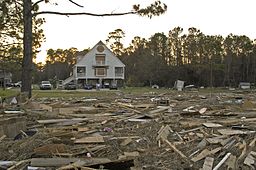
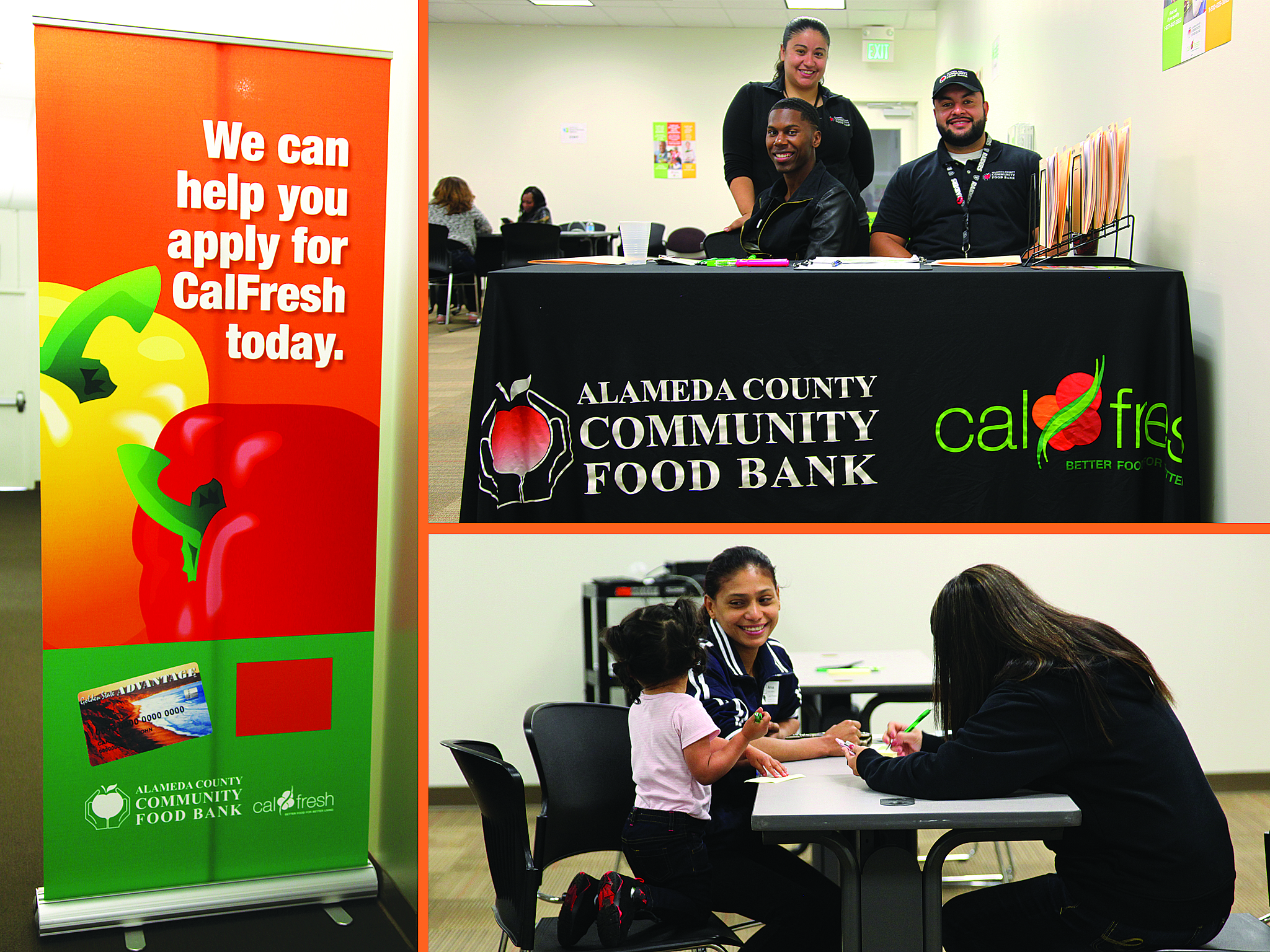
 is Outreach Programs Manager of Alameda County Community Food Bank. She implemented Oasis Insight to track her team's CalFresh Outreach (California’s SNAP program). The Alameda Food Bank provides CalFresh prescreening and application assistance in five different languages. They also offer free training for community agencies to help identify potentially eligible CalFresh recipients. Their CalFresh 101 for beginners gives the basics on program eligibility, including prescreening. CalFresh 102 for advanced learners gives an in-depth look at eligibility for special populations such as seniors, disabled, immigrants, felons and homeless. They have been using Oasis Insight to track their progress for three years.
is Outreach Programs Manager of Alameda County Community Food Bank. She implemented Oasis Insight to track her team's CalFresh Outreach (California’s SNAP program). The Alameda Food Bank provides CalFresh prescreening and application assistance in five different languages. They also offer free training for community agencies to help identify potentially eligible CalFresh recipients. Their CalFresh 101 for beginners gives the basics on program eligibility, including prescreening. CalFresh 102 for advanced learners gives an in-depth look at eligibility for special populations such as seniors, disabled, immigrants, felons and homeless. They have been using Oasis Insight to track their progress for three years.

